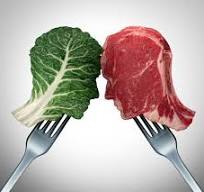
In recent years, dietary trends have surged in favour of high-protein, meat-heavy diets, particularly grass-fed and ethically sourced meat. From paleo and keto movements to carnivore diets, the media is now full of recommendations to eat more animal protein. However, while there may be some merit to these trends, it’s important to look at both the advantages and potential downsides of increased meat consumption from a research-based perspective.
I’d like to explore the pros and cons of eating more meat, particularly grass-fed options, and offer a balanced view on how to approach this trend in a way that supports overall well-being, health, and sustainability.
The Rise of Meat-Centric Diets
The shift toward meat-heavy diets can be traced to movements like the paleo and keto diets, both of which emphasise whole, unprocessed foods with a strong focus on animal proteins. These diets have gained significant popularity due to claims that they mimic ancestral eating patterns and offer benefits such as weight loss, improved metabolic function, and enhanced muscle growth. Additionally, the trend of eating grass-fed or pasture-raised meat has been promoted as a more ethical, nutrient-dense, and sustainable choice compared to conventional meat.
While these movements highlight valid points, such as the nutrient content of grass-fed meat and the importance of healthy fats, they often downplay the risks associated with high meat consumption. Moreover, we must consider practical questions: Can we realistically feed the entire global population with grass-fed meat? Is there enough supply to meet this demand? And what about affordability? Grass-fed meat is typically more expensive than conventionally raised meat, and many people may struggle to make this a regular part of their diet. For those on lower incomes or in areas with limited access to these products, this trend may be financially out of reach, raising important issues of accessibility and equality in nutrition.
Pros of Grass-Fed Meat
Grass-fed meat is generally richer in omega-3 fatty acids, which are known to benefit heart health, reduce inflammation, and support brain function. Additionally, it contains higher levels of antioxidants, such as vitamin E, and beneficial fatty acids like CLA (conjugated linoleic acid), which may aid in fat loss and immune support.
Sustainability and Ethical Farming
Proponents argue that grass-fed meat is better for the environment than conventionally raised, grain-fed meat, as it typically involves more humane practices and reduced reliance on antibiotics and hormones. Grass-fed cattle are often raised in open pastures, which can help restore soil health and reduce the carbon footprint of meat production when compared to intensive factory farming.
Better for Digestion
Grass-fed meat contains fewer artificial additives, antibiotics, and hormones, making it a more natural and digestible option for many people. Some individuals with digestive issues or food sensitivities report feeling better when consuming cleaner, higher-quality sources of protein.
The Cons: Health Risks and Sustainability Concerns
Potential Health Risks
While grass-fed meat may have certain benefits, excessive meat consumption, in general, has been linked to increased risks of heart disease, cancer, and type 2 diabetes. Research from The Journal of the American College of Cardiology (JACC) highlights that high consumption of red meat can raise cholesterol levels and increase the risk of cardiovascular disease. Additionally, studies in Nutrients advocate for moderation, aligning with functional medicine’s approach to balance, emphasising plant-based nutrition alongside moderate meat intake for optimal health.
Environmental Impact
While grass-fed meat may be a more sustainable choice than factory-farmed options, large-scale meat production, regardless of the method, still has significant environmental costs. Livestock farming contributes to greenhouse gas emissions, deforestation, and water usage. Even grass-fed beef, which is often marketed as eco-friendly, requires substantial land and resources. Many experts argue that reducing overall meat consumption is necessary to mitigate the environmental impacts of global meat production.
Overlooking Plant-Based Benefits
The current meat-heavy trend can overshadow the well-documented benefits of plant-based diets. Extensive research supports the idea that diets rich in fruits, vegetables, whole grains, and legumes are associated with a reduced risk of chronic diseases. Studies published in The Lancet and BMJ suggest that diets high in plant-based foods and low in animal products can improve overall longevity and well-being.
The Japanese Approach: Balanced, Moderate, and Plant-Centric
Japan, often cited as one of the world’s healthiest populations, offers a compelling model of nutrition that contrasts sharply with the meat-heavy trends in Western countries. The Japanese “spinning top” dietary model prioritises a variety of plant-based foods, including vegetables, grains, and legumes, while recommending moderate consumption of meat and animal products. This approach is widely credited with contributing to Japan’s low rates of chronic diseases and longer life expectancy.
Japanese cuisine, which is naturally lower in red meat and higher in fish, soy, and vegetables, illustrates that you don’t need to eat large amounts of meat to achieve good health. Instead, the focus is on balance, variety, and moderation—a lesson that is particularly relevant in the context of today’s global discussions around meat consumption.
Eat a Balanced Meal for Optimal Health and Sustainability
So, how do we navigate this trend in a way that supports both health and sustainability? The answer likely lies in moderation and balance. As a certified wellbeing coach and naturopathic nutritionist, I advocate for a holistic approach to health—one that recognises the value of clean, whole foods, including responsibly sourced animal proteins, while also embracing the benefits of plant-based nutrition.
Prioritise Quality Over Quantity
If you choose to include meat in your diet, focus on high-quality, ethically sourced options like grass-fed, pasture-raised meats, and avoid overconsumption. The goal should be to enjoy these foods in moderation rather than relying on meat as the main component of every meal.
Diversify Your Protein Sources
Incorporating a variety of plant-based proteins such as legumes, beans, tofu, and quinoa can provide essential nutrients and fibre while reducing your intake of saturated fats and cholesterol. Plant-based proteins also offer a more environmentally friendly way to meet your nutritional needs.
Conclusion: Is the Grass-Fed Meat Trend a Fad or a Sustainable Solution?
The trend of eating more grass-fed meat is not necessarily a fad, but it should be approached with caution and balance. While grass-fed meat may offer some health and environmental benefits, the evidence still supports the need for moderation in meat consumption overall. Excessive intake of red meat, even grass-fed, is associated with health risks, and the environmental impact of large-scale meat production remains a concern.
Ultimately, the best approach is one that considers both personal health and the planet’s sustainability. A balanced, whole-food diet that includes a mix of plant-based and ethically sourced animal products is a more thoughtful and responsible way to navigate the complexities of today’s food landscape. By staying informed and mindful of the research, we can make better choices for ourselves and the world around us.
https://pmc.ncbi.nlm.nih.gov/articles/PMC6089671/
https://www.thelancet.com/journals/lanplh/article/PIIS2542-5196(24)00118-9/fulltext
https://www.sciencedirect.com/science/article/pii/S175173112400034X


